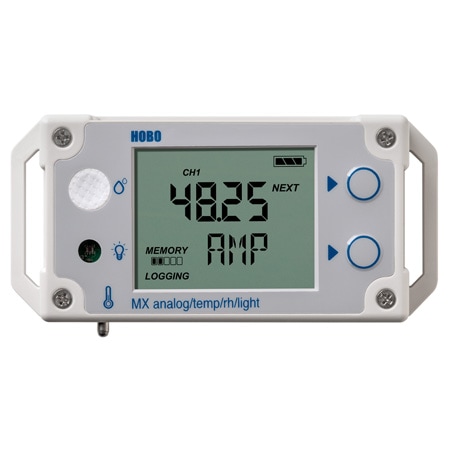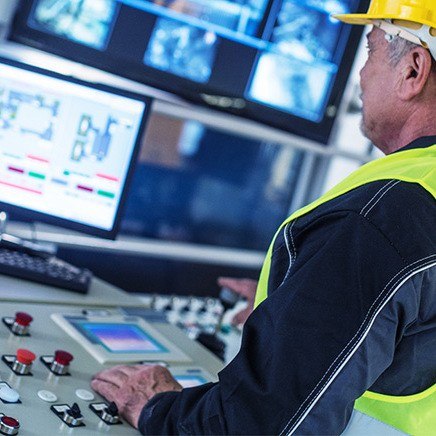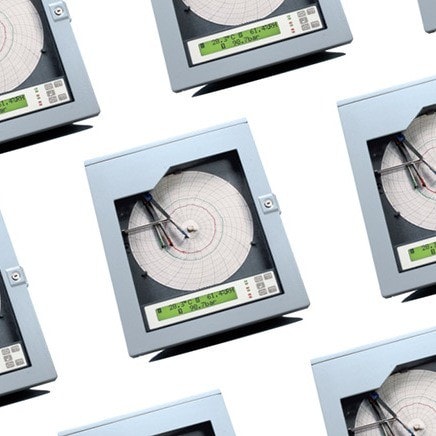In industrial environments, accurate measurement and documentation of process conditions are essential for ensuring quality, safety, efficiency, and regulatory compliance.
One of the most effective tools for this task are data loggers — electronic devices designed to automatically record measurements over time. These devices capture key process variables — such as temperature, pressure, humidity, voltage, or flow rate — and store the information for later analysis. Many modern data loggers also support real-time monitoring, remote access, and integration with supervisory control systems, making them a flexible solution for a variety of industrial applications.
Types of Data Loggers
Data loggers come in several specialized types, each designed to monitor and record different types of process variables under varying operational conditions. Understanding these categories is critical for selecting the appropriate logger to match your system requirements, compliance obligations, and data management strategy.
Temperature Data Loggers
Temperature data loggers are engineered to capture and record thermal conditions over time, using internal sensors, external probes, or thermocouple inputs.
Advanced models may offer multi-point temperature profiling, programmable sampling intervals, alarm notifications, and NIST-traceable calibration to support regulatory compliance (e.g., FDA, HACCP standards).
-
Common Features:
Pressure Data Loggers
Pressure data loggers measure and document variations in gas or liquid pressure, often crucial for maintaining safe and efficient operations in systems like HVAC networks, industrial gas supply lines, compressed air systems, and process piping.
Data logger selection may depend on required pressure ranges (e.g. inches of water column for HVAC vs. thousands of psi for industrial hyraulics).
-
Common Features:
Humidity Data Loggers
Humidity data loggers continuously monitor relative humidity (RH), and often temperature, within controlled environments such as cleanrooms, laboratories, greenhouses, and industrial storage facilities.
Maintaining appropriate RH levels is essential for preventing material degradation, contamination risks, and maintaining the functionality of sensitive equipment or processes (such as semiconductor manufacturing or pharmaceutical storage).
-
Common Features:
- Capacitive or resistive RH sensors
- Dew point calculation capability
- Integrated alarms for out-of-range conditions
- Long-term stability (low drift over time)
Voltage & Current Data Loggers
Voltage and current data loggers are used to capture electrical signals from powered systems or sensors.
In industrial applications, they monitor power quality, equipment load profiles, control signal voltages, or verify the performance of analog output sensors.
his type of data logger is especially useful in predictive maintenance programs, where identifying irregular electrical behavior can prevent unplanned downtime.
-
Common Features:
- AC and DC voltage monitoring capabilities
- Current monitoring using direct input or external current clamps
- Synchronized multi-channel recording
- High-speed sampling for capturing transient events
Multi-Channel or Universal Input Data Loggers
Multi-channel or universal input data loggers offer maximum flexibility by accommodating multiple sensor types simultaneously (e.g., temperature, pressure, voltage, flow).
They are ideally suited for complex systems requiring holistic monitoring, such as manufacturing lines, research facilities, or pilot plants.
Inputs may include thermocouples, RTDs, 4–20 mA transmitters, voltage sources, or digital state signals.
-
Common Features:
- Independently configurable input channels
- Data synchronization across all inputs
- Expandable memory for high-density recording
- Communication protocols such as Modbus RTU, Modbus TCP/IP, or OPC UA for integration with SCADA systems
Why Use Data Loggers in Industrial Applications?
Manual data collection is not only time-consuming but also prone to human error. In contrast, automated data logging provides:
-
Consistent, high-accuracy readings across extended time periods.
Reliable process documentation for audits, reporting, and compliance.
Early detection of anomalies that could indicate equipment failure or unsafe conditions.
Support for predictive maintenance strategies, reducing downtime and repair costs,
Improved process validation and optimization through trend analysis.
By automating these critical tasks, data loggers free up personnel to focus on higher-level system monitoring and problem-solving.
Common Industrial Applications for Data Loggers
Data loggers are used across a wide range of industries to continuously monitor and record key process parameters, providing reliable data for performance validation, quality control, and system diagnostics.
Common Industrial Applications for Data Loggers
| Application | Parameter Monitored | Example Use Case | Recommended Data Logger Type |
|---|---|---|---|
| Industrial Welding Gas Systems | Flow and Pressure | Verify stable delivery of shielding and fuel gases to maintain weld quality | Pressure or Mass Flow Data Logger |
| Cleanroom Environmental Control | Temperature, Humidity, CO₂ | Monitor air quality and climate conditions to ensure process integrity | Multi-Channel Environmental Logger |
| HVAC System Performance | Temperature, Pressure, Airflow | Evaluate system efficiency and validate operational safety | Compact USB or Wireless Logger |
| Refrigeration and Cold Chain Monitoring | Temperature | Maintain proper storage conditions for temperature-sensitive materials | Temperature Logger with Alarm Functionality |
| Wastewater Treatment Processes | Level, Pressure, Flow | Track pump performance and prevent overflow conditions | Pressure or Level Data Logger |
Connectivity and Integration Options
Modern industrial data loggers often support:
- Analog inputs (4-20 mA, voltage signals)
- Digital inputs/outputs
- Modbus RTU / Modbus TCP for PLC integration
- Cloud-enabled remote access
- Wireless communication (Bluetooth®, Wi-Fi, or LoRa)
The capabilities make it easier to integrate loggers into IIoT ecosystems for centralized monitoring and remote diagnostics.




